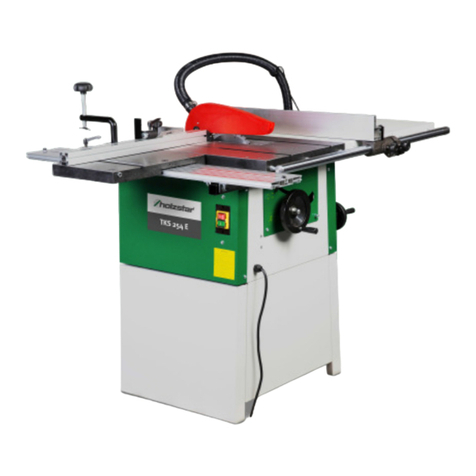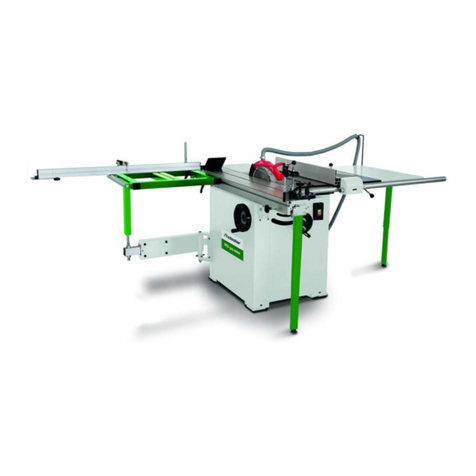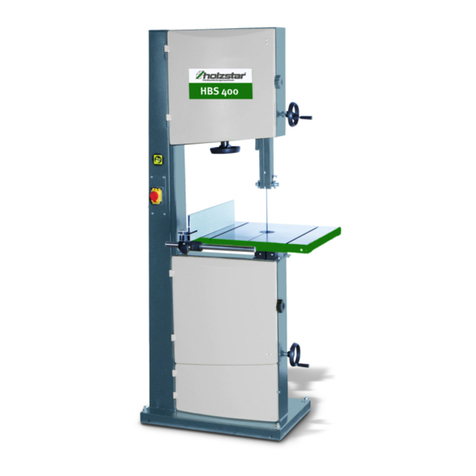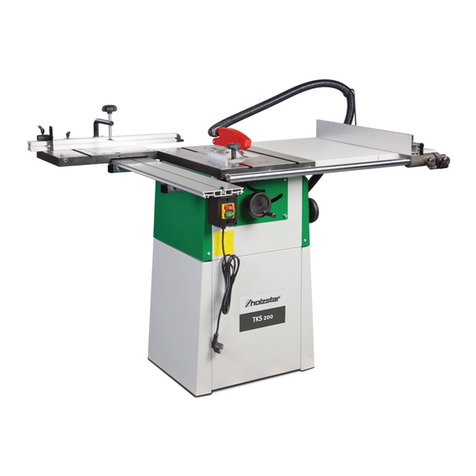
Safety
KGZ Series | Version 2.02 | EN 7
3 Safety of the person
a) Be careful, consider what you're doing, and you
go to work with a power tool with common sense.
Do not use a electrical tool if you are tired or un-
der the influence of drugs, alcohol or medica-
tion. A second of inattention while using the electri-
cal tool can lead to serious injury.
b) Wear personal protective equipment and safety
goggles at all times.
Wearing personal protective equipment such as a
dust mask, non-slip safety shoes, safety helmet or ear
protection, depending on the type and use of the
electrical tool, will reduce the risk of injury.
c) Reduce the risk of accidental operation. Make
sure the electrical tool is turned off before
connecting, picking up or carrying it to the power
supply and/or battery. If you have your finger on the
switch when carrying the electrical tool or connect the
electrical tool to the power supply switched on, this
may result in injury.
d) Remove adjusting keys and wrenches. A tool or
key located in a rotating part of the power tool may
cause injury.
e) Ensure that you avoid abnormal posture. Make
sure that you stand securely and keep your ba-
lance at all times. This will allow you to better
control the power tool in unexpected situations.
f) Wear appropriate clothing. Do not wear loose clo-
thing or jewelry. Keep hair and clothing away
from moving parts. Loose clothing, jewellery or long
hair may be caught by moving parts.
g) If dust extraction and collection equipment can be
used, it must be connected and used correctly.
The use of a dust extractor may reduce the risk of
dust.
h) Do not weigh yourself in false safety and do not
overstep the safety rules for power tools, even if
you are familiar with the electrical tool after many
uses. Careless action can lead to serious injuries wit-
hin fractions of a second.
4 Use and handling of the electrical tool
a) Do not overload electric tools. Use the right electric
tool for your work. With the right tool, you work better
and more secure in the specified power range.
b) Do not use the electric tool with a defective switch. A
electric tool that cannot be switched on or off is dan-
gerous and must be repaired.
c) Disconnect the plug from the power outlet and/or
remove a detachable battery before adjusting the
unit, changing insert tool parts or putting the po-
wer tool away. This precaution prevents the power
tool from accidentally starting.
d) Store unused electrical tools out of the reach of
children. Do not allow anyone to use the electrical
tool who is not familiar with it or who has not read
these instructions. Power tools are dangerous if
used by unauthorized persons.
e) Maintain the electrical tools and applied tools with
the care. Check that moving parts function cor-
rectly and do not jam, that parts are broken or da-
maged in such a way that the function of the
electrical tool is reduced. Have damaged parts re-
paired before using the electrical tool. Many inju-
ries are caused by poorly maintained power tools.
f) Hold cutting tools sharp and clean. Carefully main-
tained cutting tools with sharp cutting edge are easier
to operate.
g) Maintain the electrical tools and applied tools etc.
according to these instructions. Take into ac-
count the working conditions and the activity to
be performed. The use of the electrical tools for ap-
plications other than those intended can lead to the
dangerous situations.
h) Keep the handles and handle surfaces dry, clean
and free of oil and grease. A slippery grip does not
allow safe operation and control of the electrical tool
in unforeseen situations.
5 Service
a) Have repaired the electrical tool only by the quali-
fied personnel and use only original spare parts.
This will ensure the safety of the electrical tool
b) If it is necessary to replace the power cord, it must be
done by the manufacturer or its representative to avoid a
safety hazard.
Battery Tool Use and Care
a) Recharge only with the charger specified by the
manufacturer. A charger that is suitable for one type of
battery pack may create a risk of fire when used with
another battery pack.
b) Use power tools only with specifically designated
battery packs. Use of any other battery packs may
create a risk of injury or fire.
c)
When Battery pack is not in use, keep it away from
other metal objects, like paper clips, coins, keys, nails,
screws or other small metal object that can make a
connection from one terminal to another.
Shorting the
battery terminals together may cause burns or a fire.
d) User abusive conditions, liquid may be ejected
from the battery. Avoid contact. If contact accidentally
occurs, flush with copious amounts of water. If liquid con-
tacts eyes, seek medical help immediately. Liquid
ejected from the batter may cause irritation or burns.





































